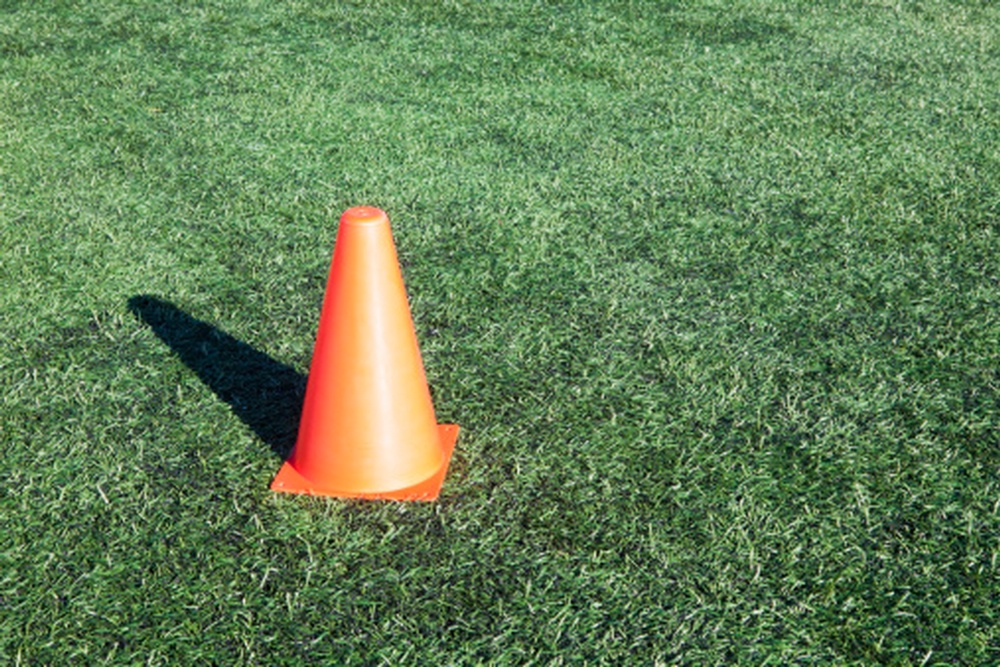The Updated Definition of Agility

We once defined the term “agility” as the ability to change direction quickly. So if I were agile, I would be noted for my ability to stop abruptly, shift my center of gravity, and continue in a different direction, which is useful in many sports. When we test agility in athletes, we have them run a pre-planned route, usually around some cones, and/or between lines, while being timed. The faster the athlete runs the course, properly touching the cones, or lines, the more agile, and presumably, more successful they will be in competition. The problem is when playing or competing, the athlete generally does not know exactly what pattern he or she will be pursuing. This is generally dictated by the opponent, or the ball. For example, its useful for basketball players to be change directly laterally, quickly, as that is what happens when defending against a player dribbling or passing the ball. However, the dribbling player will not be moving in a predictable pattern (hopefully), so in order to play proper defense, the defender will need to process what he or she sees, then react to the dribbler. This differs from simply moving quickly without having to react. Another example, the baseball infielder, depending on where the ball is hit, must also process then react to field the ball. So during competition the athlete must be aware, process what they see, then react accordingly. Thus a cognitive component is present and serves as the indicator or impulse to the actual movement to change direction. This concept has stimulated an update to the traditional definition of agility.
Agility is now defined as the ability to rapidly change direction in response to a stimulus. Indeed it has now become a priority in many human performance labs and sports facilities (such as here and here) to test what is called reactive agility. The traditional agility testing, now termed change of direction, or COD, has been demoted to a test of less importance, some eschewing COD testing completely in favor of reactive agility (such as here). Reactive agility is assessed in athletes via coaches giving directional signals to an athlete while they are running, to blinking light devices that dictate when to move, to having athletes respond to mock opponents shown on a large screen mimicking a competitive situation. With more exercise labs examining reactive agility, evidence that reactive agility can be improved through training is still sparse. Physical tests that use reactive agility to differentiate between “A” players from “B” players however, is emerging. I admit, I am bothered by the demotion of COD, and in turn, agility testing. Even if reactive agility turns out to be trainable, it is still only half of the equation. Regardless of how long it takes the athlete to process and form an impulse, they still then must execute the actual COD, which can be trained, improved, and properly assessed.
Eschewing traditional tests such as the 20 yard shuttle and the T-test, in favor of blinking lights may be “impulsive” (no pun intended). Additionally, whenever we add a cognitive component, we increase complexity of training and testing exponentially. As a coach, I can observe an athlete moving, and assess their gait, posture, form, and help them improve but it is more difficult to see what is going on inside his or her head prior to the impulse. Thus, difficult to apply specificity to the training regimen, as well as overload, cornerstones of a progressive training program. If we cannot properly apply the principles of training to improve reactive agility, it is certainly not worth having athletes spend significant amounts of time on, in spite of how fashionable it is.
To summarize, agility is now broken down into two components, a cognitive component, termed reactive agility and COD ability. COD is the traditional component, we have valid assessments and ways to apply training principles (specificity, overload, etc) to help athletes improve it. Reactive agility is currently more fashionable and though some recent assessments do show utility, the ability to program for improvement is questionable. I recommend caution in putting significant time and resources into reactive agility assessment, in place of that for COD in athletes who compete in environments that demand quick changes of direction.
Hope this helps and thanks for reading!
Looking for guidance in improving your athletic performance? Better yet, ready to make a change in your life? I help folks play better, contact me here to set up a free consult!
Published by mattktraining
I am currently the Owner of my soloprenuerial company Matt K Training. Through my fitness and nutrition programs I help adults develop skills and practices that help them eat, move, and recover well. Over the past 20 years, in various roles such as a Personal trainer, Exercise Physiologist, Clinical Researcher, and Health Coach I have helped hundreds of adults reach their health and physical performance goals. When not working, I enjoy active pursuits such as playing right field for the Charlton Giants (in a 38+ competitive baseball league), playing tennis, hiking, backpacking, and rock climbing. I also enjoy indoor activities such as playing strategy board games, reading and discussing science fiction literature, dabbling with my guitar, finding creative ways to eat oatmeal, and being a good dad.